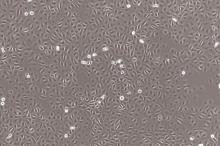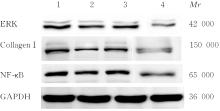| 1 |
DEMBER L M, BECK G J, ALLON M, et al. Effect of clopidogrel on early failure of arteriovenous fistulas for hemodialysis: a randomized controlled trial[J]. JAMA, 2008, 299(18): 2164-2171.
|
| 2 |
LEE T, ULLAH A, ALLON M, et al. Decreased cumulative access survival in arteriovenous fistulas requiring interventions to promote maturation[J]. Clin J Am Soc Nephrol, 2011, 6(3): 575-581.
|
| 3 |
林燕婷, 吴禹池, 杨 敏, 等. 中医药促进血液透析患者动静脉内瘘成熟的用药规律[J]. 中国中西医结合肾病杂志, 2020, 21(3): 224-227.
|
| 4 |
SHANG Q H, XU H, HUANG L. Tanshinone ⅡA: a promising natural cardioprotective agent[J]. Evid Based Complement Alternat Med, 2012, 2012: 716459.
|
| 5 |
TIAN X H, WU J H. Tanshinone derivatives: a patent review (January 2006-September 2012)[J]. Expert Opin Ther Pat, 2013, 23(1): 19-29.
|
| 6 |
DUAN H T, MA L J, LIU H G, et al. Tanshinone ⅡA attenuates epithelial-mesenchymal transition to inhibit the tracheal narrowing[J]. J Surg Res, 2016, 206(1): 252-262.
|
| 7 |
DURAN C L, KAUNAS R, BAYLESS K J. S1P synergizes with wall shear stress and other angiogenic factors to induce endothelial cell sprouting responses[J]. Methods Mol Biol, 2018, 1697: 99-115.
|
| 8 |
BASHAR K, CONLON P J, KHEIRELSEID E A, et al. Arteriovenous fistula in dialysis patients: factors implicated in early and late AVF maturation failure[J]. Surgeon, 2016, 14(5): 294-300.
|
| 9 |
GARCÍA-JÉREZ A, LUENGO A, CARRACEDO J, et al. Effect of uraemia on endothelial cell damage is mediated by the integrin linked kinase pathway[J].J Physiol, 2015, 593(3): 601-618.
|
| 10 |
MORRIS S T, MCMURRAY J J, RODGER R S, et al. Impaired endothelium-dependent vasodilatation in uraemia[J]. Nephrol Dial Transplant, 2000, 15(8): 1194-1200.
|
| 11 |
毛俐婵, 王文荣, 蒋贤辉, 等. 中药熏洗联合穴位注射对自体动静脉内瘘成熟影响的临床研究[J]. 浙江中西医结合杂志, 2018, 28(5): 384-386.
|
| 12 |
CHUNG J, KIM K H, AN S H, et al. Coxsackievirus and adenovirus receptor mediates the responses of endothelial cells to fluid shear stress[J]. Exp Mol Med, 2019, 51(11): 1-15.
|
| 13 |
YOSHINO D, SAKAMOTO N, SATO M. Fluid shear stress combined with shear stress spatial gradients regulates vascular endothelial morphology[J]. Integr Biol, 2017, 9(7): 584-594.
|
| 14 |
CHENG C, TEMPEL D, VAN HAPEREN R, et al. Atherosclerotic lesion size and vulnerability are determined by patterns of fluid shear stress[J]. Circulation, 2006, 113(23): 2744-2753.
|
| 15 |
HEO K S, FUJIWARA K, ABE J. Shear stress and atherosclerosis[J]. Mol Cells, 2014, 37(6): 435-440.
|
| 16 |
CHEN L J, CHUANG L, HUANG Y H, et al. MicroRNA mediation of endothelial inflammatory response to smooth muscle cells and its inhibition by atheroprotective shear stress[J]. Circ Res, 2015, 116(7): 1157-1169.
|
| 17 |
RUZE A, ZHAO Y W, LI H, et al. Low shear stress upregulates the expression of fractalkine through the activation of mitogen-activated protein kinases in endothelial cells[J]. Blood Coagul Fibrinolysis, 2018, 29(4): 361-368.
|
| 18 |
AKIMOTO S, MITSUMATA M, SASAGURI T, et al. Laminar shear stress inhibits vascular endothelial cell proliferation by inducing cyclin-dependent kinase inhibitor p21(Sdi1/Cip1/Waf1)[J]. Circ Res, 2000, 86(2): 185-190.
|
| 19 |
SAKAO S, TARASEVICIENE-STEWART L, LEE J D, et al. Initial apoptosis is followed by increased proliferation of apoptosis-resistant endothelial cells[J]. FASEB J, 2005, 19(9): 1178-1180.
|
| 20 |
BUROTTO M, CHIOU V L, LEE J M, et al. The MAPK pathway across different malignancies: a new perspective[J]. Cancer, 2014, 120(22): 3446-3456.
|
| 21 |
SAMATAR A A, POULIKAKOS P I. Targeting RAS-ERK signalling in cancer: promises and challenges[J]. Nat Rev Drug Discov, 2014, 13(12): 928-942.
|
| 22 |
NACKMAN G B, FILLINGER M F, SHAFRITZ R, et al. Flow modulates endothelial regulation of smooth muscle cell proliferation: a new model[J]. Surgery, 1998, 124(2): 353-360;discussion 360-361.
|
| 23 |
SONG M, FINLEY S D. Mechanistic characterization of endothelial sprouting mediated by pro-angiogenic signaling[J]. Microcirculation, 2022, 29(2): e12744.
|
| 24 |
KYRIAKIDIS N C, COBO G, DAI L, et al. Role of uremic toxins in early vascular ageing and calcification[J]. Toxins, 2021, 13(1): 26.
|
| 25 |
JIA L, WANG L H, WEI F, et al. Effects of Caveolin-1-ERK1/2 pathway on endothelial cells and smooth muscle cells under shear stress[J]. Exp Biol Med, 2020, 245(1): 21-33.
|
 ),Lan JIA1,Haiyan CHEN1,Bo YANG2,Zhe WANG1,Xueqing BI1
),Lan JIA1,Haiyan CHEN1,Bo YANG2,Zhe WANG1,Xueqing BI1









